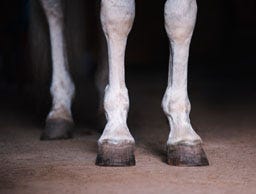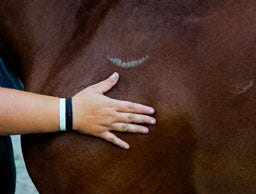Is Swimming Good for Dogs?
It wouldn’t be summer without going for a swim at the beach, your local pool, or even in the wild. But should you take your dog along for the trip?
Find out all about dog swimming benefits, including which dog breeds can swim and which can’t below.
Is Swimming Good Exercise for Dogs?
Swimming is a great exercise for many dogs, especially those specifically bred to spend extended time in water. It makes for a great muscle-building exercise, improves your dog’s cardiovascular health, and can be a wonder for dogs with certain mobility issues.
Some of the top benefits of dog swimming include:
- Low-impact exercise—Swimming puts very little strain on your dog’s muscles and joints, as the buoyancy supports most of their weight, but they’ll still get a full-body workout!
- Weight management—The added resistance of moving through the water will burn more calories than just walking, which, combined with the ease of their joints, makes it great for overweight dogs! *
- Mental Stimulation—Swimming provides a new sensory experience for dogs, which provides great mental stimulation when paired with retrieval games or dog water toys.
- Fun—Some dogs cannot keep out of the water, so why fight it? If your dog finds swimming fun, integrating it into its exercise routine can help keep it happy and engaged while doing wonders for its health!
*Always check with your vet before planning a weight loss program for your dog.
Where Can Dogs Swim?
Also, make sure you find a good spot for your dog with no fast-flowing water, rough waves, water traffic (such as boats, canoes, or surfboards) and little to no debris. Good swimming spots for dogs include:
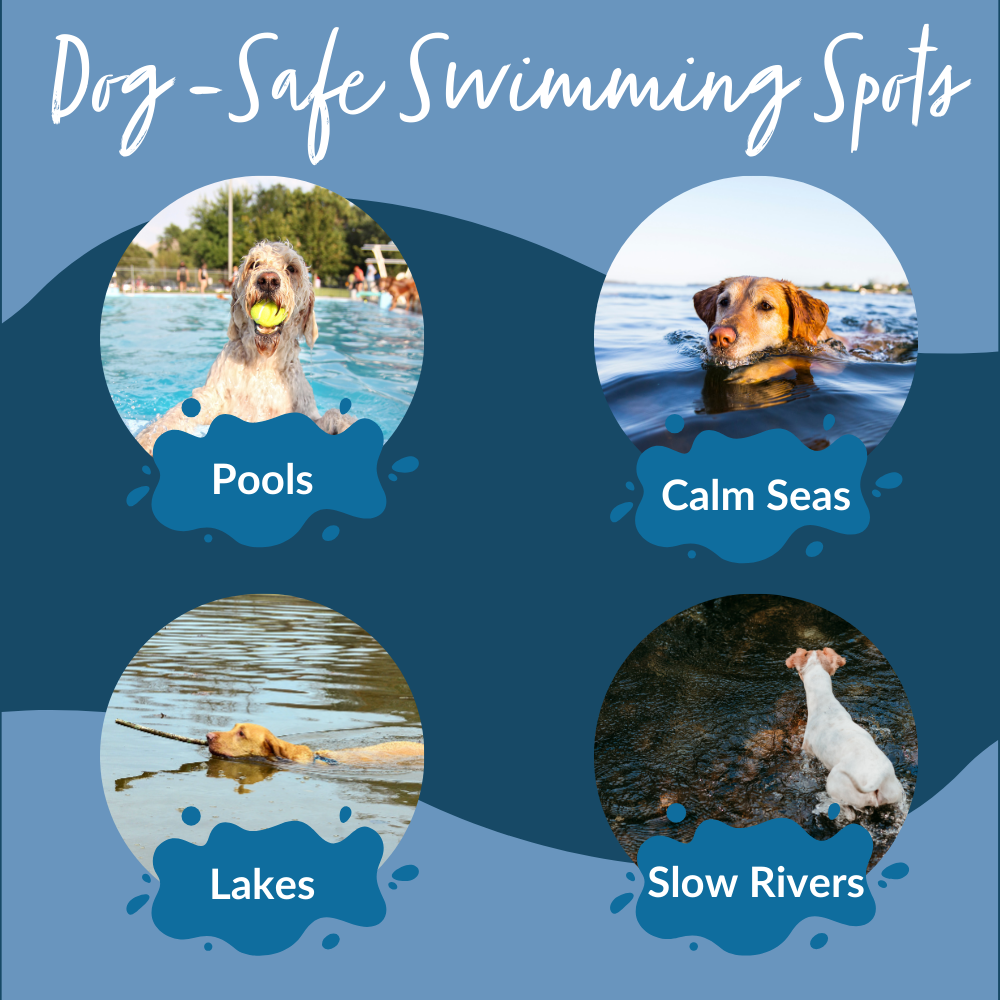

- Calm seas with designated safe swimming areas
- Lakes, especially those with shallower waters near the shore, are good for your dog to walk rather than climb out.
- Shallow, slow-moving rivers with little debris or pollution.
- Private swimming and paddling pools.
There are also some public pools specifically for dogs that can be booked, but their ability may be limited depending on your location. Always make sure to check the swimming regulations for wherever you choose as some places may look ideal but could still be unsafe for swimming.
How Long Should a Dog Swim?
While swimming is a lot of great fun for dogs and has plenty of health benefits, there are also some dog swimming safety measures to bear in mind. This is why the time you allow your dog to swim will vary.
Before you take your dog swimming, consider:
- Your dog’s breed—Were they bred for swimming? Are their bodies comfortable and natural in water?
- Your dog’s size—This may impact the places where your dog can swim, as they should be able to safely and easily get themselves out of the water.
- Your dog’s health—Does your dog have any existing health concerns that might impact their ability to swim?
- Purpose for swimming—Are you planning to use swimming as your dog’s main exercise? Are you teaching them to swim for rehabilitation?
- Does your dog like water?—You should never force your dog into the water, as this can be extremely dangerous and stressful. Slowly building your dog's confidence around water is the best way to ensure its safety.
- Does your dog need additional support?—Due to their body proportions, some dogs require lifejackets for added buoyancy in water to stop them from sinking and prevent drowning accidents.
If your dog is comfortable in water and already a capable swimmer, then allowing them to do so for 10–30-minute intervals is ideal. This allows your dog the time to get out of the water for bathroom breaks if needed, stops them getting over-tired, and gives them time to hydrate.
Even on hot days, try to limit your dog’s time in the water to prevent them overexerting themselves in the heat.
Is Swimming Good for Dogs with Arthritis?
Swimming is a brilliant alternative exercise for dogs suffering from arthritis. Many rehabilitation and recovery therapies for dogs involve water, such as hydrotherapy or canine water therapy.
As with swimming for fun, these water-based therapies are great for dogs who struggle with stiff joints or other mobility issues as the water takes the dog’s weight, allowing them to move about without putting excessive strain on their joints. This way, your dog can still exercise and build muscle mass without exacerbating existing conditions.
Remember, not every dog is built to swim, so if hydrotherapy has been recommended for your dog, make sure you take the necessary safety precautions before letting them get into the water. These include:
- Start in shallow waters so your dog can get used to it before letting them attempt swimming in deeper waters.
- Provide a life jacket (especially for non-swimming dog breeds and dogs with mobility issues) to prevent accidental drownings.
- Attend dog swimming classes if your dog doesn’t already know how to swim to build its strength, stamina, and confidence.
- Be there to supervise your dog when they’re in the water.
Many owners of arthritic dogs see great improvements in their condition after introducing them to swimming or hydrotherapy. Speak to your vet to see if this would be suitable for your dog.
Is Swimming Good for Older Dogs?
Much like with arthritic dogs, older dogs can greatly benefit from swimming. Unlike walking, swimming offers low-impact exercise for dogs, making it great for older dogs with aches and pains. Swimming provides a gentle, soothing exercise that encourages older dogs to stay mobile without straining aching joints or muscles.
Make sure you speak with your vet before switching up your senior dog's exercise routine.
Can All Dogs Swim?
All dogs were bred for different things. This is something to bear before you start looking for optimal swimming spots for your dog because while the exercise may benefit some, it could be dangerous for other breeds.
Below, we detail some of the top dog breeds that benefit from swimming and highlight which breeds shouldn’t swim without first consulting a vet.
Please note that these are generalisations for each breed based on their history, general health, and activity level. Every dog has individual tastes and may or may not enjoy going for a swim. Not every breed that can benefit from swimming has been listed, and not all those who have may enjoy it. If you are unsure if your dog is suitable for swimming, speak with your veterinarian.
Dogs That Can Swim
A common trait among certain breeds of dogs is that no matter what you do, you cannot keep them out of the water. Many of these dogs were traditionally bred for water or land retrieval of birds, waterfowl and even otters.
Whether it is a dirty puddle on a woodland walk or a paddling pool in your garden, these dogs take to the water like ducks, and why stop them?
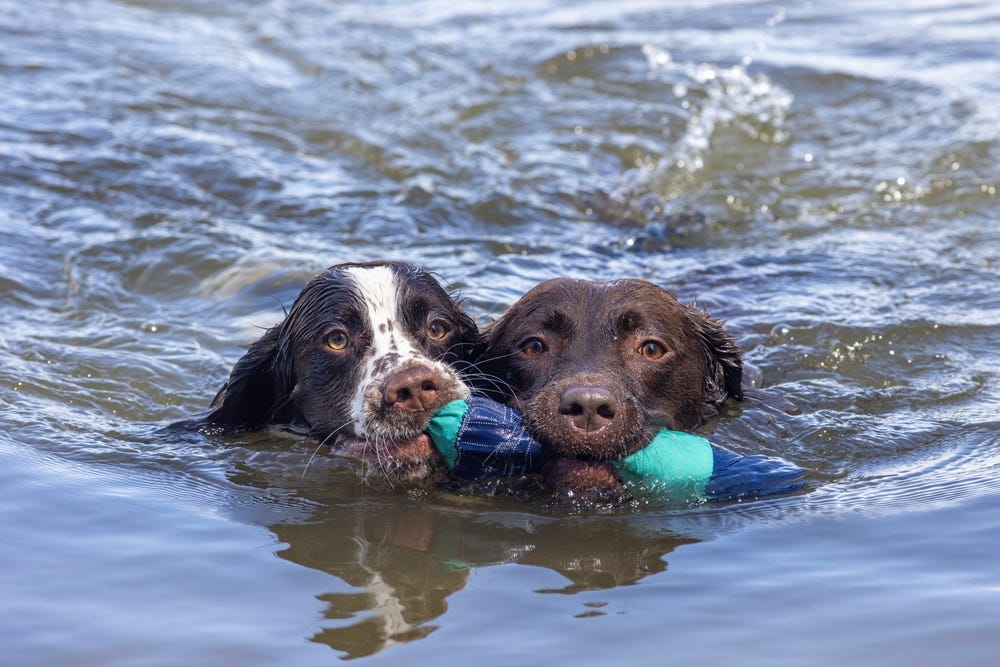

Spaniels
It is no surprise to anyone that Spaniels are one of the top breeds that love a good swim. In fact, many spaniels, such as the Irish Water Spaniel and the Boykin spaniel, were bred for water retrieval, making them great little swimmers!
Other breeds of spaniel, such as Cocker Spaniels and English Springer Spaniels which were initially bred as gundogs also feel the pull of water. Each of these breeds have different attributes, but their love of water and eager personalities mean they’re likely to outlast you in the water every time.
Retrievers
Much like spaniels, many Retriever breeds were bred as gun dog retrievers for both land and water, and they have the characteristics to prove it. The Flat-Coated retriever’s coat is practical and protects the dog from harsh weather cold temperatures, while the Labrador Retriever has webbed feet and an otter-like tail to help them steer themselves in water.
Nowadays, these dogs make great family pets with their adorable antics and soft-hearted nature, but if you’re ever looking for a way to exert that boundless energy, then a good swim is always a winner!
Water Dogs
As the name suggests, Water Dogs such as the Spanish Water Dog and The Portuguese Water Dog, were born for the water. While the history of the Spanish Water Dog is uncertain, The Portuguese Water Dog was bred to aid fishermen by herding fish into nets and retrieving broken nets and torn equipment for fishermen.
These dogs love a swim, and with their webbed feet and sturdy, athletic bodies, they’re clearly built for it. If you want to encourage exercise with a water dog, teaching retrieval with water toys is a great way to get started!
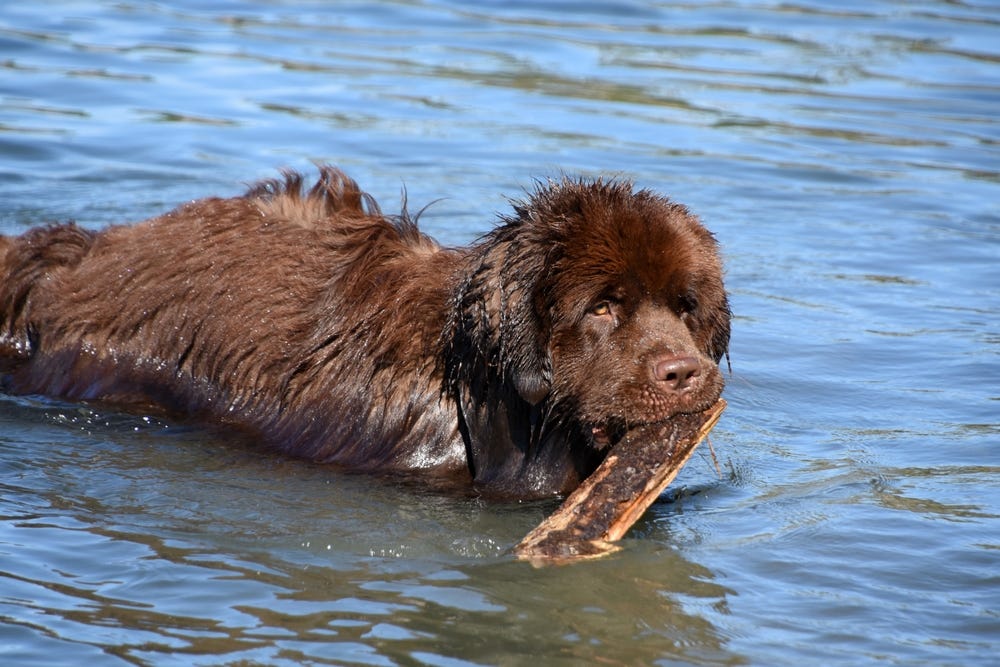

Newfoundlands
Perhaps the largest breed on this list, the Newfoundland loves being in the water. These powerful dogs have a few water-specific characteristics like webbed feet and water-repellent coats, which, paired with their calm temperament and substantial endurance, made them a popular choice for water rescues!
While you’re more likely to find a Newfoundland as a family pet today, they still love a good splash. Plus, due to their size, swimming can give them a great full-body workout without putting strain on their joints.
Otter Hounds
Much like the water dog, the breed Otter Hound’s name speaks for itself. These boisterous dogs were bred to hunt otters in and out of their natural habitat. With webbed feet and a rough, waterproof coat, these dogs are exceptional swimmers. Their large noses can also follow an otter’s scent trail underwater across great distances, so you’ll likely find it harder to keep these dogs out of the water than convince them to get in.
Dogs That Can't Swim
Every rose has its thorns, and for each dog breed that is born and bred for swimming, there are those that steer clear of deep water for the sake of their health. That’s not to say you should keep them away from all water. Many of these breeds can happily play and splash around in shallow waters like paddling pools or puddles but should not swim unless under constant supervision.
Flat-Faced Dogs
Dogs with flat faces (brachycephalic dogs) should not be allowed to swim due to the breathing difficulties many of these breeds suffer from. The most important thing a dog needs to be able to do when swimming is keeping their head above water, and this is a challenge for dogs like Pugs and Bulldogs, who need to tip their heads back to keep out of the water, causing their back end to sink further. The struggle to keep their nose from the water paired with their short legs and barrel-chests simply make these dogs unsuited for swimming.
The same goes for other flat-faced breeds, including, but not limited to:
- Pugs
- Boxers
- Shih Tzus
These dogs may not be swimmers, but they can still enjoy a quick dip so long as they have constant support, supervision, and even dog lifejackets.
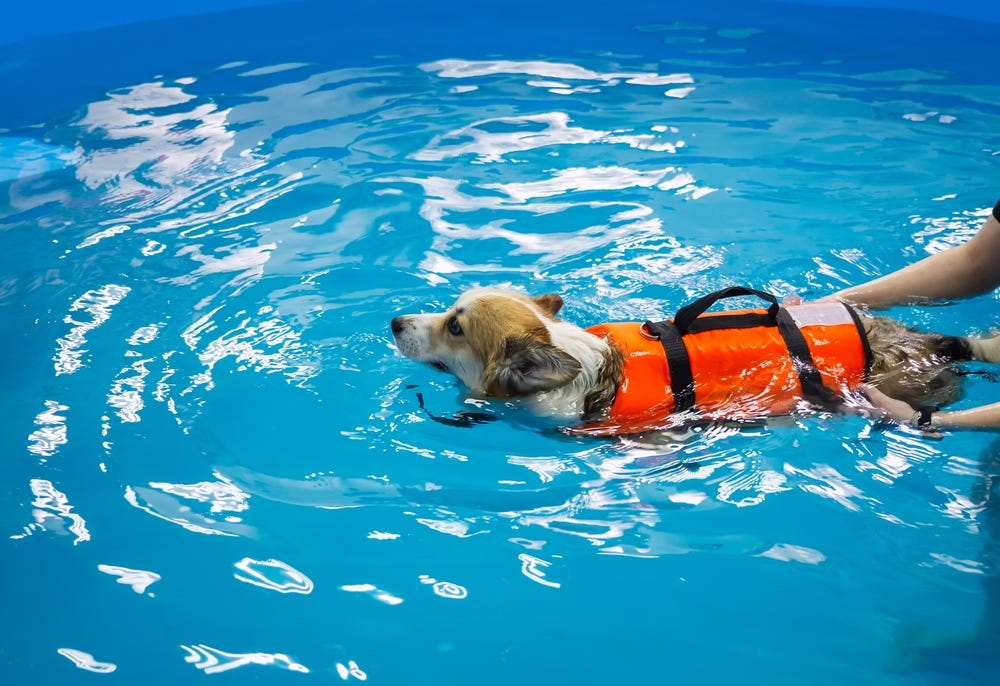

Corgis & Dachshunds
These dogs are coveted for their unique builds with longer bodies and much shorter legs than other breeds. Their legs make these breeds poor swimmers as they need to work much harder to be mobile, even in shallow water and tilting their head back to stay above water can also put strain on their spines leading to potential back problems. These dog breeds may also struggle with maneuvering in and out of water, especially pools or ponds without shallower waters.
Splashing around in very shallow water such as in slow streams or paddling pools can be a great alternative for these dogs to help them cool off in the heat or providing them with a lifejacket to support their spines.
Long Haired / Double Coated Dogs
For some dogs, it’s not their bodies that are unsuited to water but their coats. While many dogs who were bred for water have water-repellent or quick-drying coats, dogs like Chow Chows and Afghan Hounds have thicker and longer coats that require much more maintenance to prevent matting.
Plus, as these coats are not water repellent or resistant, they can weigh your dog down while it’s in the water, making swimming more difficult and using up more energy for the same amount of exercise. This can make your dog tire more easily, increasing the risk of drowning accidents. Smaller dogs with long coats are also prone to getting cold much quicker, and having a wet or damp coat can make this worse for them.
Other dogs with unsuitable coats for swimming include:
- Shih Tzu
- Great Pyrenees
- Maltese
- and more!
Most of these types of breeds don’t tend to like being in the water, but if they do, then it’s essential you learn how to care for their coat after they’re out of the water. These coats can take a long time to dry, which, combined with their body heat, creates the perfect environment for bacteria to grow and thrive. This can cause skin problems and even fungal or bacterial infections. Long-haired or double-coated dogs are also more prone to matting, which leaving their fur wet can exacerbate.
Ensure you always bathe or rinse your dog after swimming, dry it properly with a microfibre towel like this Henry Wag® Microfibre Cleaning Towel, and give it a good brush.
Swimming offers dogs a wealth of health benefits, but it is essential that you speak to your vet if you have a non-swimming breed to find out the best ways to keep them safe in the water.
If you’re looking to spruce up your dog's swimming routine, take a look at our great range of dog accessories, including water toys for dogs, microfibre dog towels, and more!


This post is an opinion and should only be used as a guide. You should thoroughly discuss any change to your pet’s care or lifestyle with your vet before starting any program or treatment.

































